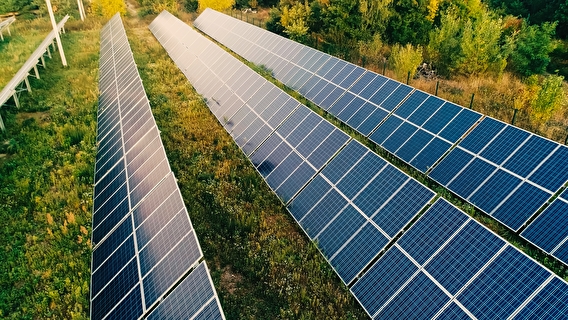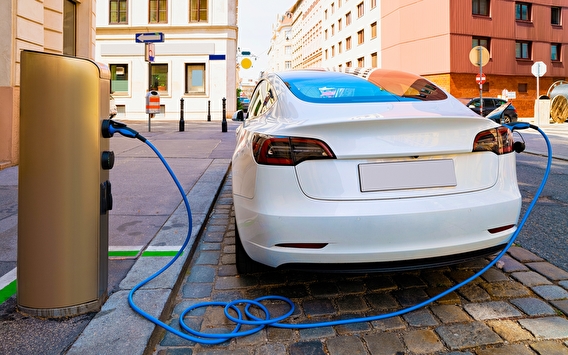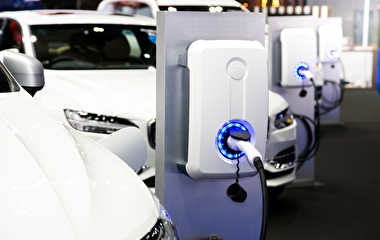
The transition to sustainable energy is underway in Minnesota and across the country, propelled by both a growing need to reduce greenhouse emissions and the upcoming influx of funds from new federal legislation. On October 26, 2022, CTS hosted a seminar to explore two important aspects of the energy transition and their impacts on the transportation infrastructure: community solar and electric vehicle (EV) readiness.
Gabe Chan, an associate professor at the U of M’s Humphrey School of Public Affairs, provided an overview of community solar—solar facilities shared by multiple community subscribers—in Minnesota and elsewhere. According to Chan, advantages of community solar include equity, environmental benefits, jobs, revenue, local control, and technical benefits to the electric grid.
“Efficient and equitable policy needs to consider the institutional structure of energy systems, such as market and political power,” Chan said. “Community solar provides an opportunity to deploy energy resources while rethinking cost and benefit allocation—distributing power and wealth more intentionally.”
Community solar is poised to play a key role in transportation’s energy transition, he continued, because the electrification of transportation will increase electricity demand. Careful planning will be needed to avoid significant additional grid expenditures and higher greenhouse gas emissions.
“We need to think about the electrification of transportation in concert with the supply side in order to manage our greenhouse gas emissions, and offsite renewables like community solar can play a really important role in this,” Chan said. “For example, we expect that companies with fleets of vehicles will be interested in solar projects to offset their emissions by putting new renewable energy onto the grid in proportion to the amount their vehicle fleets are pulling.”
Chan’s current research is helping move forward renewable energy projects that build from experience in community solar—specifically, through an innovative project with the Minnesota Department of Transportation (MnDOT) and the Red Lake Nation. The project is assessing the feasibility of a new solar energy project model that could help meet state and tribal energy needs and greenhouse gas reduction goals.
“MnDOT would be the subscriber to a solar project sited in Red Lake and would use it to help offset the agency’s electricity consumption,” Chan explained. “If this partnership is successful, it could provide a framework for similar agreements in the future, especially as the agency works to encourage and incentivize the electric vehicle charging network.”

Next, Diana McKeown, director of the metro Clean Energy Resource Team at the Great Plains Institute, gave an overview of the new EV Smart Communities Certification Program. The program is funded by MnDOT’s Clean Transportation Pilot Program.
EV Smart Communities is a recognition program designed to provide communities (both cities and native nations) with a roadmap to EV readiness, including securing funding and getting projects off the ground. Categories in the program’s framework include planning, regulation, utility engagement, education and incentives, government operations, and shared mobility—with an overarching goal of equity.
“The path to becoming EV-ready involves a portfolio of best practices and actions, including both simple steps and more complicated initiatives that make it possible for any community to participate,” McKeown said, adding that local leadership is essential to creating a self-sustaining EV market. “Local governments shape the action of residents and businesses, use tools to foster their community’s transition to EV, and signal to the market that we are ready for EVs.”
McKeown also emphasized that equity is a critical aspect of building out the EV infrastructure, and that local governments will be critical to ensuring equity is infused in their EV readiness initiatives. “If the siting of EV infrastructure is left to private developers and charging operators rather than addressed through planning, access to underserved communities will be limited,” she said. “Advancing equity will require accessibility of equipment, multifamily supportive policies, right-of-way supportive policies, and geographic coverage.”
Writer: Megan Tsai


